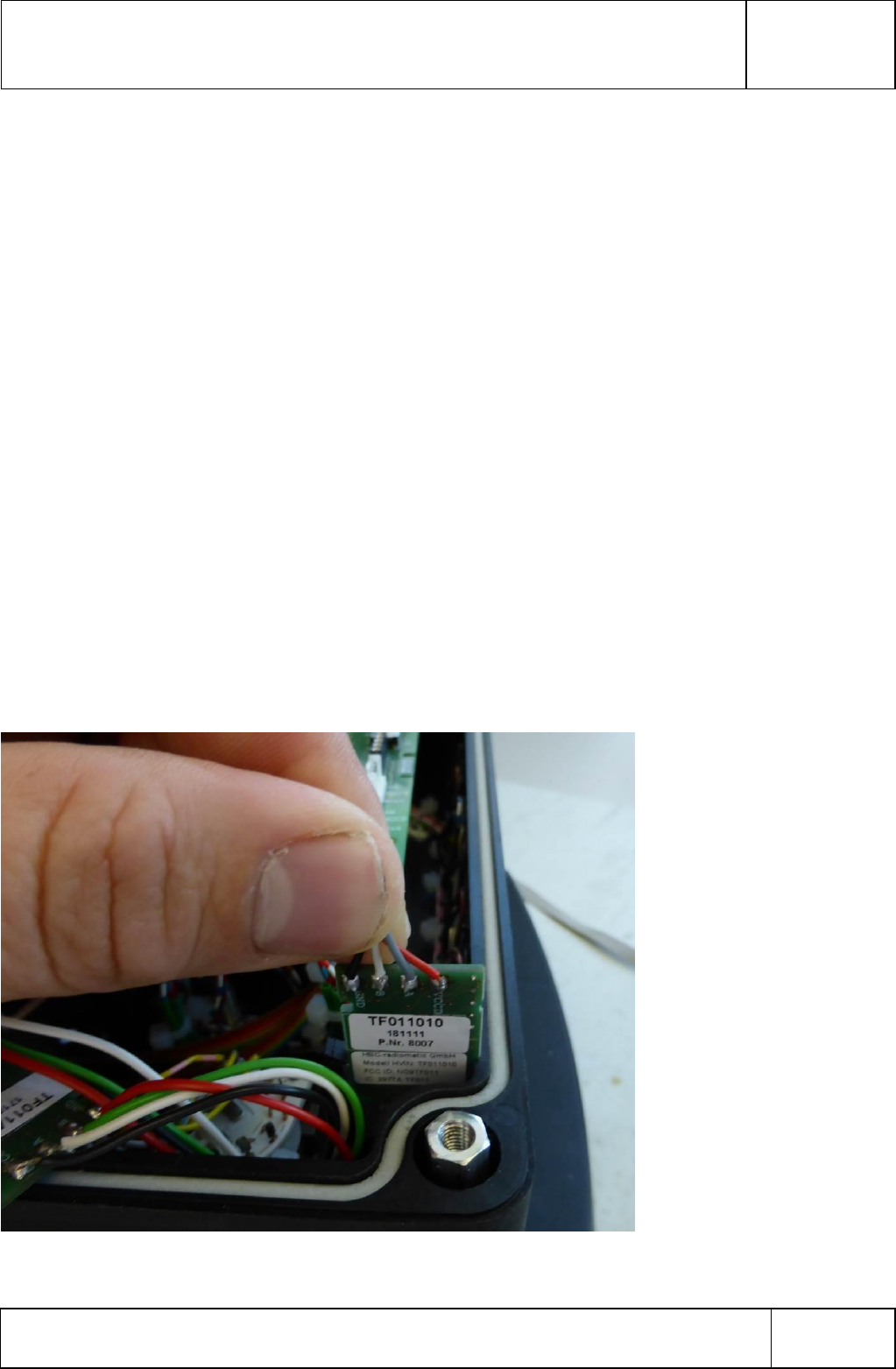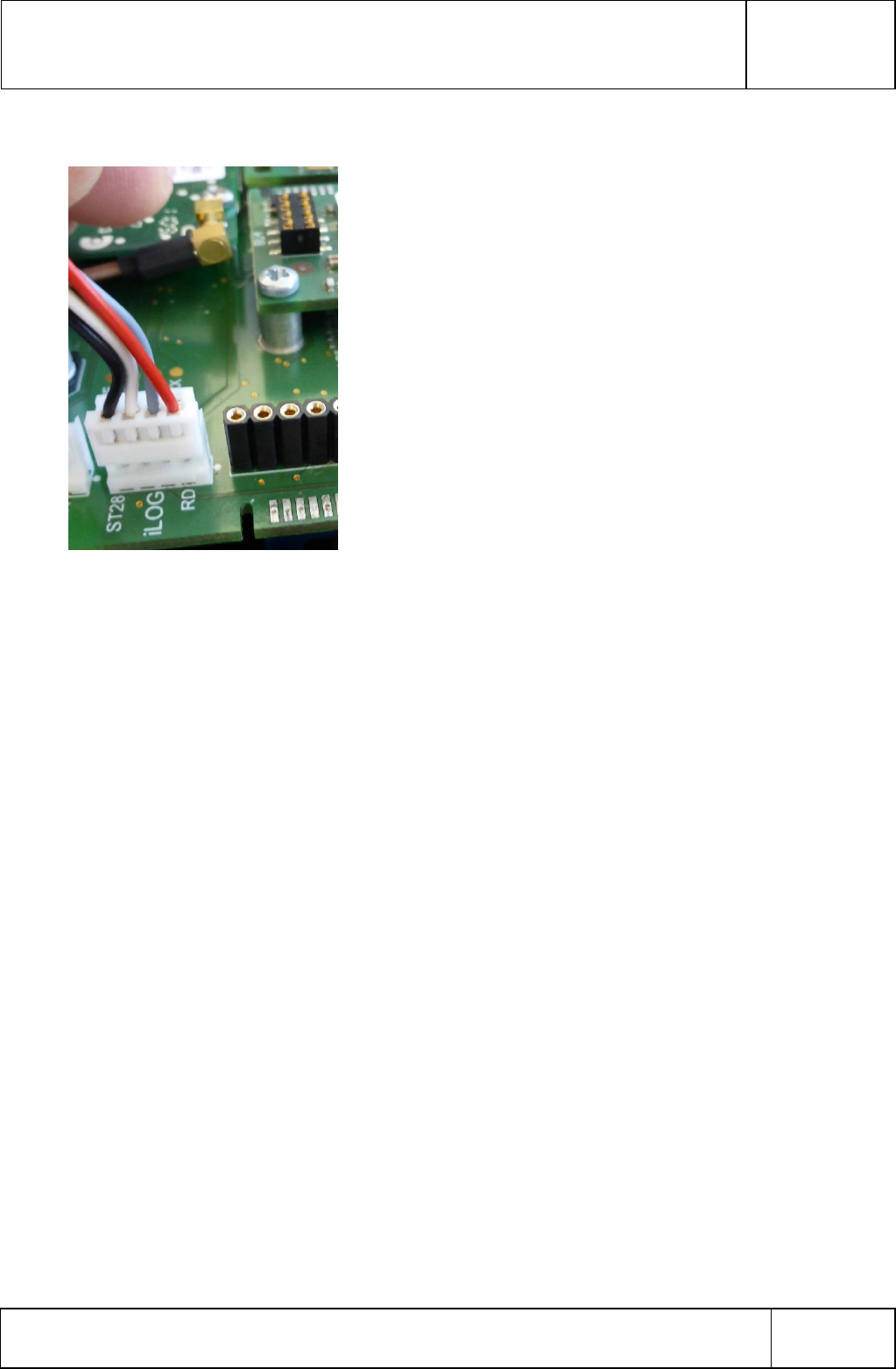HBC radiomatic TF011 RFID Reader User Manual
HBC-radiomatic GmbH RFID Reader
user manual

TF0110__ integration manual
HBC
Author: Florian Abelein
Date: 08.06.2018
Seite 1 von 4
Revision: 0
1 Introduction ....................................................................................................................................... 1
2 Installation ......................................................................................................................................... 1
2.1 Possible Hosts ............................................................................................................................ 1
2.2 Installation process ..................................................................................................................... 1
3 Authorization requirements ............................................................................................................. 3
4 Labeling requirements for the host ................................................................................................ 3
5 RF exposure statement (mobile and fixed devices) ...................................................................... 3
6 RF exposure statement (portable devices) .................................................................................... 3
7 Instruction manual requirements .................................................................................................... 3
1 Introduction
This document describes the installation of TF0110__ into the HBC-transmitter.
2 Installation
2.1 Possible Hosts
The module TF011010 may be installed in every HBC-transmitter. It has to be supplied with a DC voltage of 3.0 V
up to 5V. The module TF011010 has an integrated RFID-antenna. So there is no need for an antenna installation.
2.2 Installation process
First of all the TF011010 module has to be put into the groove of the transmitter housing as the next picture shows.

TF0110__ integration manual
HBC
Author: Florian Abelein
Date: 08.06.2018
Seite 2 von 4
Revision: 0
As next step the connection cable has to be pushed into the TF011010 interface connector of the mainboard as the
next picture shows:
FCC
- The Federal Communications Commission (FCC) warns the users that changes or modifications to the unit
not expressly approved by the party responsible for compliance could void the user's authority to operate
the equipment.
- FCC §15.105 (b):
NOTE: This equipment has been tested and found to comply with the limits for a Class A digital device,
pursuant to part 15 of the FCC Rules. These limits are designed to provide reasonable protection against
harmful interference when the equipment is operated in a commercial environment. This euipment
generates, uses, and can radiate radio frequency energy and, if not installed and used in accordance with
the instruction manual, may cause harmful interference to radio communications. Operation of this
equipment in a residential area is likely to cause harmful interference in which case the user will be
required to correct the interference at his own expense.
Canada
- This device complies with Industry Canada’s license-exempt RSSs. Operation is subject to the following
two conditions:
(1) This device may not cause interference; and
(2) This device must accept any interference, including interference that may cause undesired operation of
the device.
- Le présent appareil est conforme aux CNR d’Industrie Canada applicables aux appareils radio exempts de
licence. L’exploitation est autorisée aux deux conditions suivantes:
1) l’appareil ne doit pas produire de brouillage;
2) l’utilisateur de l’appareil doit accepter tout brouillage radioélectrique subi, même si le brouillage est
susceptible d’en compromettre le fonctionnement.

TF0110__ integration manual
HBC
Author: Florian Abelein
Date: 08.06.2018
Seite 3 von 4
Revision: 0
3 Authorization requirements
The integrator of a certified module is responsible for ensuring that the end product consisting of host and
module(s) installed continues to be compliant with all the intentional radiator requirements applicable to the
module(s) and the host. When additional application filing for RF exposure compliance demonstration is not
required, the host manufacturer may do evaluation without any filing if compliance with transmitter output power,
out-of-band, restricted band, and spurious emission requirements as specified in 47 CFR Part 15 subpart C and
appropriate ISED Radio Standards Specifications (RSS) is confirmed for the end product.
The host manufacturer is also responsible for ensuring that the host continues to be compliant with the 47 CFR
Part 15 subpart B unintentional radiator requirements after the module is installed and operational. Therefore, the
procedure for equipment authorization of unintentional radiators as stated in §15.101 applies to the end product,
too.
4 Labeling requirements for the host
At the HBC-transmitter into which the TF011010 module is installed the label has to be added with the following
content:
Contains FCC ID: NO9TF011
Contains IC: 2977A-TF011
5 RF exposure statement (mobile and fixed devices)
This device complies with the RF exposure requirements for mobile and fixed devices. However, the device shall
be used in such a manner that the potential for human contact during normal operation is minimized.
6 RF exposure statement (portable devices)
This device complies with the RF exposure SAR test exclusion requirements for portable devices, if a minimum
separation distance (1 mm ) is kept. However, the device shall be used in such a manner that the potential for
human contact during normal operation is minimized.
7 Instruction manual requirements
The following content has to be added in the instruction manual of the HBC-transmitter which contains the
TF011010 module:
“This device complies with Part 15 of the FCC Rules. Operation is subject to the following two conditions:
(1) this device may not cause harmful interference, and (2) this device must accept any interference
received, including interference that may cause undesired operation.”
Modification of equipment
The instruction manual of the host shall include the following statement:
Changes or modifications made to this equipment not expressly approved by the party responsible for
compliance may void the FCC authorization to operate this equipment.
Information to the user
(The instruction manual of the host shall include the following statement)

TF0110__ integration manual
HBC
Author: Florian Abelein
Date: 08.06.2018
Seite 4 von 4
Revision: 0
- FCC §15.105 (b):
NOTE: This equipment has been tested and found to comply with the limits for a Class A digital device,
pursuant to part 15 of the FCC Rules. These limits are designed to provide reasonable protection against
harmful interference when the equipment is operated in a commercial environment. This euipment
generates, uses, and can radiate radio frequency energy and, if not installed and used in accordance with
the instruction manual, may cause harmful interference to radio communications. Operation of this
equipment in a residential area is likely to cause harmful interference in which case the user will be
required to correct the interference at his own expense.
Canada
- This device complies with Industry Canada’s license-exempt RSSs. Operation is subject to the following
two conditions:
(1) This device may not cause interference; and
(2) This device must accept any interference, including interference that may cause undesired operation of
the device.
- Le présent appareil est conforme aux CNR d’Industrie Canada applicables aux appareils radio exempts de
licence. L’exploitation est autorisée aux deux conditions suivantes:
1) l’appareil ne doit pas produire de brouillage;
2) l’utilisateur de l’appareil doit accepter tout brouillage radioélectrique subi, même si le brouillage est
susceptible d’en compromettre le fonctionnement.
Special accessories
Where special accessories such as shielded cables and/or special connectors are required to comply with
the emission limits, the instruction manual shall include appropriate instructions on the first page of the text
describing the installation of the device.
Simultaneous transmission
When the host product supports simultaneous-transmission operations the host manufacturer needs to
check if there are additional RF exposure filing requirements due to the simultaneous transmissions. When
additional application filing for RF exposure compliance demonstration is not required (e. g. the RF module
in combination with all simultaneously operating transmitters complies with the RF exposure simultaneous
transmission SAR test exclusion requirements), the host manufacturer may do his own evaluation without
any filing, using reasonable engineering judgment and testing for confirming compliance with transmitter
output power, out-of-band, restricted band, and spurious emission requirements in the simultaneous-
transmission operating modes.
If additional filing is required please contact the person at HBC Radiomatic responsible for certification of
the RF module.